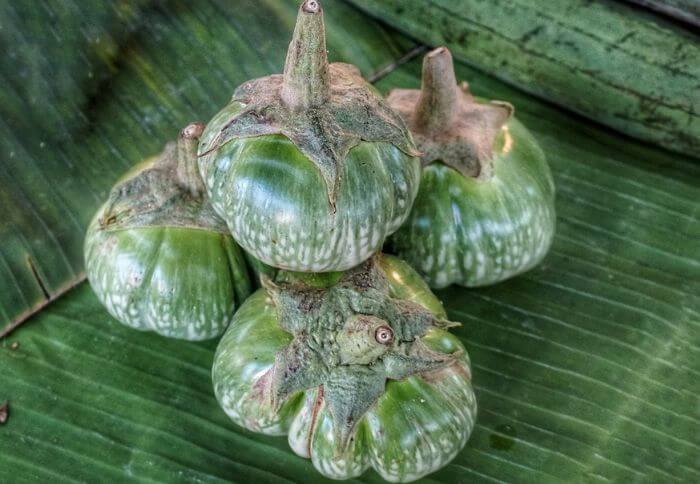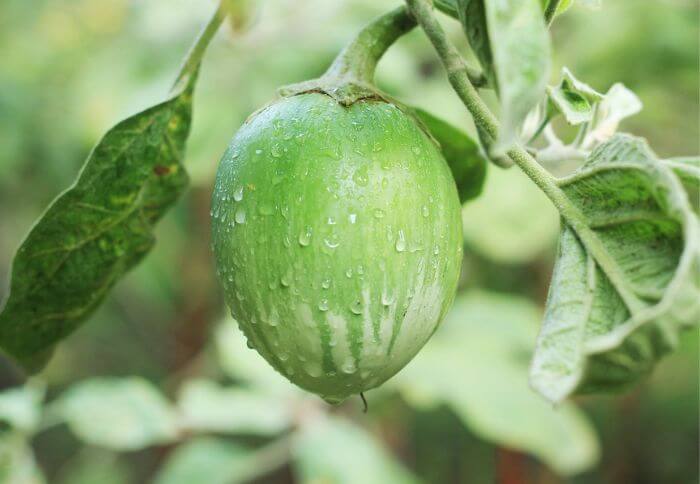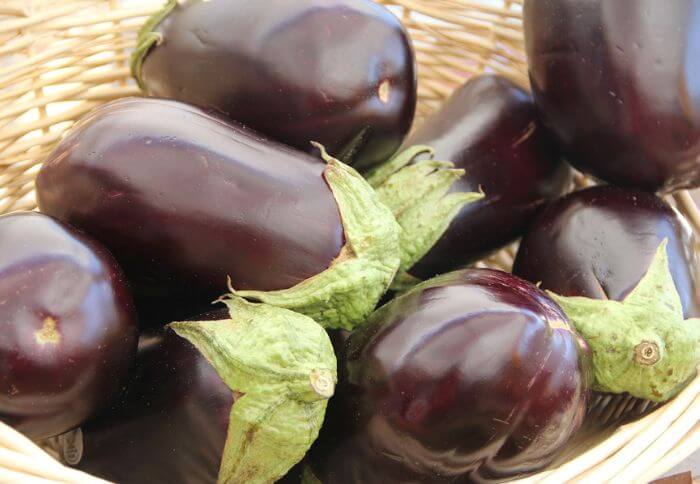Have you ever wondered how to make the perfect eggplant parmigiana or baba ganoush without ending up with a bitter dish? The answer lies in an unexpected kitchen hack – soaking the eggplant slices in milk!
This little-known trick has been passed down through generations of culinary enthusiasts who swear by its ability to remove bitterness and tenderize even the toughest pieces of this purple beauty.
So if you’re ready to elevate your eggplant game and impress your friends and family with melt-in-your-mouth dishes, get ready to dive into the delightful world of soaking eggplant in milk.
The Science Behind Soaking Eggplant in Milk
Chemical reactions between milk and eggplant
The complex chemical reactions that occur when milk and eggplant come into contact may surprise you. When the eggplant is soaked in milk, a process called osmosis takes place.
Osmosis is the movement of water from an area of high concentration to an area of low concentration through a semi-permeable membrane, such as the cell walls of the eggplant.
As a result, when immersed in milk, the eggplant cells absorb liquid from the milk, causing them to plump up and become more tender.
Additionally, enzymes present in both milk and eggplant interact during this soaking process. For example, protease enzymes in milk act on proteins present in the flesh of the eggplant.
This enzymatic activity breaks down these proteins into smaller molecules called peptides or amino acids. As a result, not only does soaking an eggplant in milk enhance its tenderness but it also adds rich flavors to it.
Interestingly, while most people associate dairy products with sweetness, submerging an eggplant (which has a slightly bitter taste) in milk can actually help balance its flavor profile.
The sugars naturally found in milk—mainly lactose—react with compounds responsible for bitterness found in certain varieties of eggplants. This reaction leads to a milder and less bitter taste overall.
How milk helps in reducing bitterness and enhancing the texture of eggplant
Eggplant, with its unique flavor and smooth texture, is a staple in many cuisines. However, it can sometimes have a bitter taste that turns people away from this versatile vegetable.
Luckily, there’s a simple solution: soaking eggplant in milk! This ancient kitchen hack not only helps to reduce bitterness but also enhances the overall texture of the eggplant.
The bitterness found in eggplants is due to the presence of a compound called solanine. Soaking it in milk for about 30 minutes or more helps to draw out this bitter compound and make it milder on the palate.
The proteins and fats in milk bind with solanine molecules, altering their structure and reducing their intensity. As a result, the eggplant becomes less bitter and more palatable.
Moreover, soaking eggplant in milk also improves its texture by tenderizing the flesh. The enzymes present in milk help break down complex cell walls within the vegetable, resulting in softer and creamier eggplant when cooked.
This additional step not only transforms your dish into something more enjoyable but also adds depth to its flavors.
Preparing Eggplant for Soaking
Choosing the right eggplant varieties for cooking

When it comes to cooking with eggplant, there are several different varieties to choose from, each offering its own unique flavor and texture.
One popular variety is the Italian eggplant, which is known for its elongated shape and deep purple skin. This type of eggplant has a creamy flesh that is perfect for roasting or grilling, as it becomes soft and deliciously tender when cooked.
Another great option is the Japanese eggplant, which has a thinner skin and a sweeter taste compared to its Italian counterpart.
The Japanese eggplant also tends to be less bitter, making it an excellent choice for those who prefer milder flavors in their dishes. This variety works well in stir-fries or when sliced and lightly fried.
Lastly, there’s the globe eggplant variety. With its large size and round shape, globe eggplants are commonly used in traditional Mediterranean dishes such as moussaka. They have dense flesh that holds up well during cooking and absorbs flavors beautifully.
Ultimately, the right choice of eggplant variety depends on your personal preferences and the specific dish you plan to make. Experimenting with different types can bring exciting new dimensions to your culinary creations while adding depth of flavor to your meals.
Related Read: Check different types of long eggplants
Tips for slicing and cutting
Slicing and salting eggplant before soaking it in milk may seem like an extra step, but trust me, it’s well worth the effort. Not only does this process help to remove any bitter taste from the eggplant, but it also improves its texture, making it more tender and less spongy when cooked.
One important tip is to slice the eggplant into uniform slices that are about half an inch thick. This ensures even cooking and helps to maintain a consistent texture throughout.
Once sliced, generously sprinkle salt over both sides of each slice. The salt draws out excess moisture from the eggplant, which not only removes any unwanted bitterness but also helps the slices to brown evenly when cooked.
Another crucial step is allowing the salted eggplant slices to sit for at least 30 minutes or up to an hour. This resting time allows the salt to penetrate into the flesh of the eggplant and further remove any bitterness.
During this time, you will notice droplets of liquid forming on the surface of the slices as they release their moisture – this is a good sign! Afterward, rinse off excess salt under cold running water and pat dry with a clean kitchen towel before proceeding with soaking in milk.
Soaking sliced and salted eggplant in milk adds another layer of flavor while simultaneously tenderizing them even further.
Milk contains enzymes that break down proteins in food, resulting in a more delicate texture when cooked. It’s best to use whole milk for this process as it has a higher fat
Culinary Applications
Creative recipes that benefit from milk-soaked eggplant

One creative recipe that benefits from milk-soaked eggplant is crispy eggplant Parmesan. By soaking the eggplant slices in milk before breading and frying them, you ensure a tender and juicy texture, while also reducing any bitterness that can sometimes be present in eggplants.
The milk not only helps to remove excess moisture from the vegetable but also adds a subtle creamy flavor to each bite.
Another fantastic recipe idea is stuffed milk-soaked eggplant rolls. After soaking the thinly sliced eggplant in milk, you can stuff them with a delicious mixture of ricotta cheese, spinach, garlic, and herbs.
Roll up the slices and bake them until golden brown for an elegant appetizer or main course option. The mild taste of the soaked eggplant acts as a perfect canvas for all the rich flavors within these rolls, resulting in a dish that is both visually appealing and incredibly tasty.
In conclusion, experimenting with recipes using milk-soaked eggplants opens up a world of culinary possibilities.
Whether it’s creating delightful classics like crispy eggplant Parmesan or exploring innovative dishes like stuffed milk-soaked eggplant rolls, this technique adds an extra dimension of flavor and texture to your meals. So go ahead and soak those beautiful purple wonders in creamy goodness – your taste buds will thank you!
Source:

